Chris Grinter, gada 30 maijs, 2010 For the rarely reoccurring quiz series, here is a new image. Who is this moth?
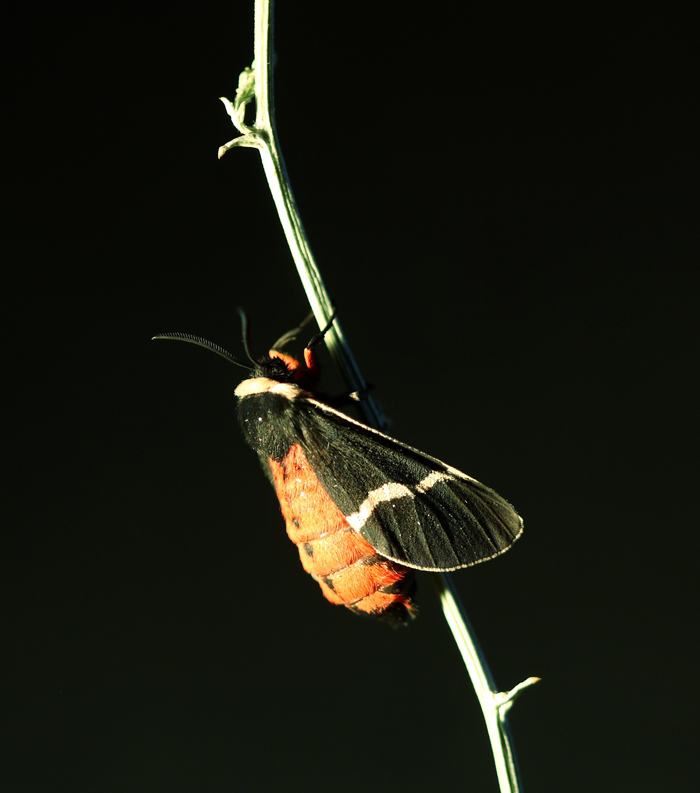
Chris Grinter, on May 25th, 2010 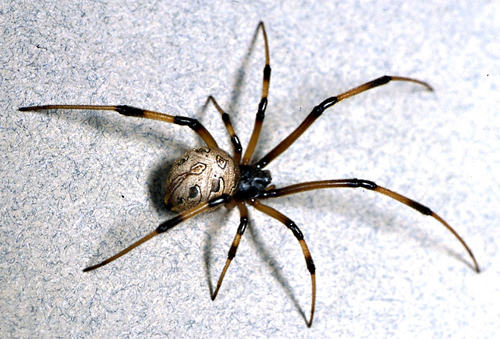
For those Californians reading, especially those in the south, keep an eye out for this beautiful little spider, Latrodectus geometricus – the brown widow. Arachnologists at UC Riverside are monitoring the spread of this invasive species. Ironically it turns out to not be as dangerous as our native black widow. Nonetheless, it is not from ’round these here parts (should be said in your best southern twang). If you find a specimen, especially if you’re not in LA/Orange/SD counties, you should contact the team at UCR.
Chris Grinter, on May 25th, 2010 With Korea teetering on the edge of a hot war, an ecological disaster of unprecedented proportion and civil unrest in Jamaica (someone harshed their mellow) – just to name a few of todays headlines from other sources – CNN takes the time to fluff up its front page.

I usually get a little excited when I come across articles like this because I always have hopes for something so ridiculous it has to be discussed. Thankfully CNN is run by teams of drunken marmosets who like to fling crap at us. Before the Skeptical Moth epoch I would share links to cover page stories on the findings of Liela pēda, chupacabra and aliens with just a few friends or spread it around facebook. Now I can ridicule CNN on a google archived medium.
I just do not understand the point of this article. John Blake doesn’t discuss an explanation for this phenomenon, offer an opinion, or ask any questions. Protams, he asks if God really cares who wins, but that question isn’t any more valid than asking if my dog (also fictional) cares what kind of car I drive (unless of course it is psychic! Nopietni…people believe this). When I read articles like this I feel as if I am grading papers in a high school english class. There is no journalistic integrity, intelligent opinion or factual basis for the scribbling – there are just pretty pictures and words illustrating them. Setting the whole prayer and faith issue aside; athletes have always been known for their superstitions (another). The “acceptance speech” phenomenon undoubtedly falls under this category. After achieving a statistically small outcome (redzēt hot hands), they are afraid of forgetting God in fear of magically losing their ability (not necessarily consciously). For some reason Blake restrains this article to only sports – perhaps he is intentionally playing into the massive demographic of American sports loving, bud-light swilling, christians – but clearly this is a reoccurring theme. At any awards ceremony God, Jesus or Allah is usually at the top of the thank-you list. Forget all that hard work and talent you might have, it was something or someone else. Abandoning all rational thought to a mystical being is a dangerous thing. This mindset is the same one that allows addicts to blame anyone but themselves (even if addiction is in part hard-wired), believe in faith healing, start a holy war, or let the Catholic church blame the devil.
CNN is flashing the lights and jingling the keys over the faces of their readers. Usually I leave it up to FOX news to insult my intelligence, but I am glad to know I have a choice in this market.
Chris Grinter, 24. maijā, 2010 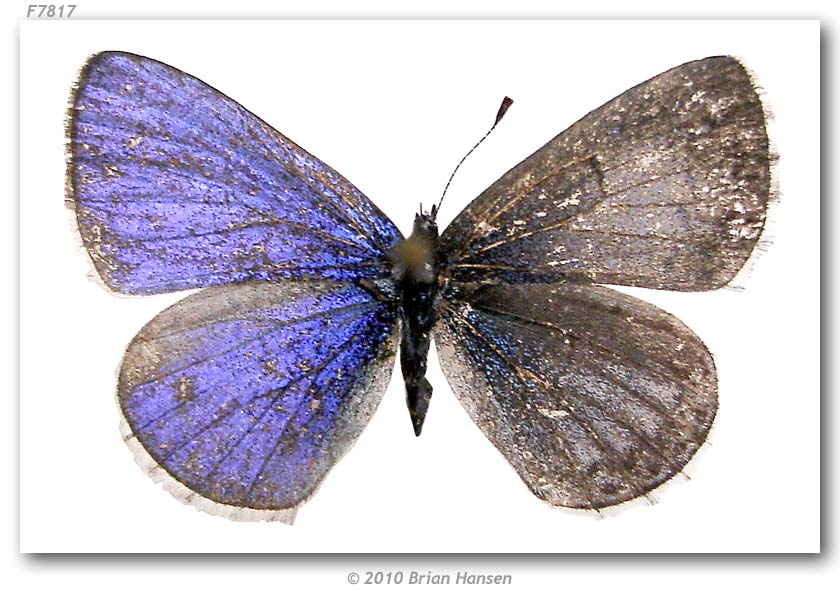
Vienreiz mūžā notikuma, a divpusējā gynandromorph. Īsumā, glitch šūnu diferenciācijas laikā rada asimetriskas hromosomu modeļus, kas noved pie asimetrisku dzimuma izpausmes pieaugušo kukaiņu. Ja jūs neesat noklikšķinājis uz saiti, darīt, tas ir lielisks apraksts ar dažiem awesome fotogrāfijām.
Atpakaļ uz taureni. Es biju jomā šā gada martā tieši virs vidējā dakšiņu American River par medības Xanthothrix, ar mani bija Brian Hansen un Bob Patterson. Bob un man bija misijā, atrast attālo plāksteris Coreopsis augstu serpentīns augsne, un, lai atrastu mūsu reti maz kožu. Brian nāca kopā izbaudīt dienu un izpētīt tauriņš faunu. Kamēr Bobs un es strauji pacēla uz priekšu ļoti vēlas redzēt, vai dienas pārgājiens būtu vērts, Brian apstājās bieži neto apdzīšanas Leps. Tas bija iespējams, mazāk nekā stundu ārā no auto, kad mēs dzirdam formu aiz mums par taku “Hey guys… Es domāju, ka es tikko nozvejotas gynandromorph!!!” Labi, Es biju skeptiski. Bob un es tuvojās redzēt Brian turot nedaudz zilā rokā, kas nepārprotami, bija divpusēja gynandromorph. Man bija aizelsies prom. Bob ir vairāk nekā 50 gadu pieredze kā Avid lepidopterist un nekad nav redzējis vienu no šiem savvaļā. Lai padarītu šo feat vēl iespaidīgāks, šī mazā zilā tauriņš ir viens no biežākajiem kukaiņiem amerikāņu rietumos pavasarī. Šodien, tie puddling lielā skaitā pa taku, un man nebija pat apstājās mirgot vienā. Brian tikai ieskaitītie viens miljons nozvejas. Varbūt tas ir lāsts par novārdzināts lepidopterist ka saglabās mani no tādiem vienreiz mūžā atklāšana; bet es zinu, es būs meklē tuvāk pat visbiezāk tauriņš, kā tas spārnus ar mani.
Tātad, kā jūs varat redzēt, tauriņš ir tieši puse vīriešu un puse sieviešu (labajā pusē ir sieviete). Ja paskatās ļoti cieši jūs pat varat redzēt perfektu vertikālu līniju bisecting ķermeni, ja kukaiņu (izskatās Photoshop rediģēt gandrīz), gynandromorphism after-viss ir izteikts visā ķermenī un pat dzimumorgāniem ir contorted pa svešām formas.
Paraugs ir Brian Hansena personiskās kolekcijas, un jūs varat atrast attēlus mitināts Tauriņi America mājas lapas.

Chris Grinter, gada 23. maijs, 2010 
Dabiski, it was named Phallus drewsii. This comes form the list of the top 10 species named iekšā 2009, ievērotas ar Arizona State University (ne ļoti labs saraksts, ja 7 no maniem jaunu sugu nebija tur…). While I tend to avoid phallic and O’Keeffesque botany, this one I couldn’t resist because it was named after someone from my own institution. Dr.. Robert Drewes now has a small phallic fungi named after him (with permission). Taxonomy humor at work.
Chris Grinter, 18. maijā, 2010 
Has just been posted over at Vaboles krūmā. Go over and explore the latest moth carnival, a gathering of blogs that have featured moths in one way or another over the last month or so.
Chris Grinter, 18. maijā, 2010 Jaunumi no Indijas, tauriņš fotogrāfs ir nolaupīti. Vietējā parks amatpersona, kas viesojās Ziemeļaustrumu province Arunāčala Pradēša tika pieņemts naktī banda bruņotu jauniešu-nemierniekiem. Centieni atrast viņu kavēja laika apstākļiem un tālvadības reljefa. India has recently become one of the most difficult countries to conduct research in, and now we are all reminded of its continuing history of violence. Often it is within the remote and wild portions of a developing country that harbors both stunning biodiversity and militant dissidents. While in Ecuador my group kept an eye out for Columbian FARC rebels who may have strayed across the border; thankfully it was only a minute possibility they would be there in the first place, and nothing was seen. I think some of my most harrowing field work has been along the US-Mexican boarder states and in Mexico itself. Drug runners would rather shoot you before asking you to move out of their way, un viesabonēšanas Banditos bija atbildīgi par slepkavību kolēģiem draugs Oaxaca gadus atpakaļ. Not surprisingly, vilinājums neizmantota daudzveidības tur velkot mūs. Palieciet droši jomā!
Chris Grinter, on May 5th, 2010 Garās nedēļas nogalē es būšu laukā. Sekojiet līdzi neticamiem stāstiem (šeit nav nekādas ažiotāžas…).
Kamēr esmu prom, izbaudiet tālāk norādīto no citiem izciliem emuāru autoriem:
Continue reading Gone Collecting
Chris Grinter, on May 5th, 2010 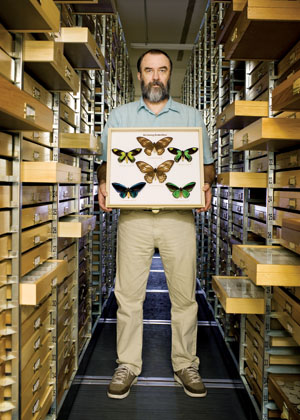 It’s good to throw a changeup every one in a while, and this week here is an article that is actually GOOD. Jā, you read it here first, a positive article about entomology collections. We all need a breather after that Fox news fiasco with the Michigan State collection. The Honolulu Magazine does a really great job (hey… I knew that title sounded familiar… it’s a book by May Berenbaum) and they actually seem to get it. There are some great quotes from Dr. Neal Evenhuis (pictured) and Shepherd Myers; go read about the Bishop Museum’s collections and the awesomeness of being an entomologist on one of the most beautiful places in the world. Faktiski, Neal, need a curatorial assistant? It’s good to throw a changeup every one in a while, and this week here is an article that is actually GOOD. Jā, you read it here first, a positive article about entomology collections. We all need a breather after that Fox news fiasco with the Michigan State collection. The Honolulu Magazine does a really great job (hey… I knew that title sounded familiar… it’s a book by May Berenbaum) and they actually seem to get it. There are some great quotes from Dr. Neal Evenhuis (pictured) and Shepherd Myers; go read about the Bishop Museum’s collections and the awesomeness of being an entomologist on one of the most beautiful places in the world. Faktiski, Neal, need a curatorial assistant?
Chris Grinter, 4. maijā, 2010
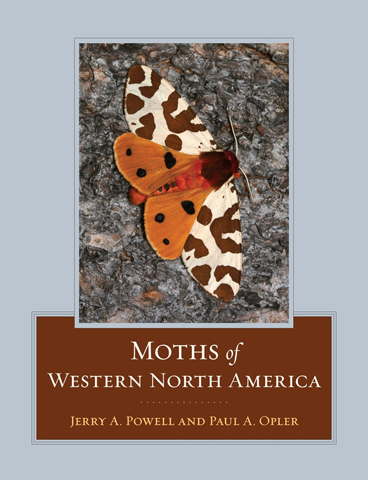
For those who are not aware, a new book hit the market at the end of last year. “The Moths of Western North America“, Powell and Opler. At only $95 it’s worth every cent (vai $75 for the e-book, but I hate e-books). It’s a remarkable tome and the first of its kind for the western states. Not only is it a spectacular reference, but it sets the bar for all insect books. No, not every moth in the west is in there (that would break my desk and wallet at over 6,000 suga), but almost one of every genus and common or remarkable species has a photograph, life history and distribution. Most importantly it covers microlepidoptera. I grew up on the eastern counterpart, Moths of Eastern North America by Covell. I had two copies, one for the field and one for my desk – and had to replace the field copy at least once. It was a great book, but Powell and Opler have run laps around it.
The other good news is you can now access all 1,228 moth illustrations and corresponding data online for bezmaksas. Go to CalPhotos and search for Powell, vai click here. The nice part about this is the somewhat smaller microlep photos in the book are available in high-resolution for better identification. Beautiful addition to the reference and easier than sending everyone a CD.
|
Skepticisms
|









